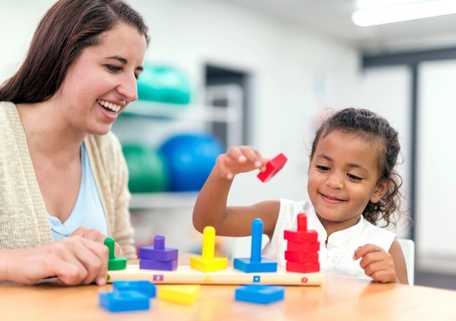Supporting your child’s OT progress at home: practical strategies for parents
Rebecca Rosam, OT sharing strategies for families
Between therapy sessions, there are many ways you can support your child’s development at home.
Occupational therapy (OT) focuses on building essential skills for everyday activities, and there are simple, everyday strategies that can be integrated into your routine to help reinforce therapy goals.
The time between therapy visits can sometimes stretch longer than expected due to illness, school commitments, or other appointments, but the good news is that small, focused activities can make a big difference in supporting your child’s growth.
Here are some practical OT strategies to try at home:
1. Messy mealtime for fine motor skills and independence
Whenever possible, sit down for a meal together.
Allow your child to use a spoon, knife, and fork—especially if they are still building their skills.
While they may make a mess, this is actually a great opportunity to strengthen fine motor skills and encourage self-regulation.
Let your child serve themselves when appropriate, as this supports coordination, hand strength, and independent eating skills.
OT tip: If your child struggles with utensil use, try introducing adaptive utensils or textured plates to help with grip. You can also use weighted utensils or plates to help them develop better control and awareness of their movements.
2. Name writing with a creative twist
Make name-writing fun by using materials like glue, glitter, buttons, or even sand to trace the letters.
This activity helps build fine motor strength, dexterity, and visual-motor integration.
Start by guiding your child in how to form each letter, and then encourage them to try tracing over the letters themselves.
Using textured materials adds sensory input, which can help children engage with the task more fully.
OT tip: If your child is having difficulty with letter formation, encourage them to use different types of lines and shapes (dots, dashes, and curved lines) to build up their ability to control their pencil or marker. This will improve their grip strength and hand-eye coordination.
3. Incorporate balance and coordination activities
Incorporating balance activities into daily routines can help build body awareness and improve coordination.
Try simple activities like balancing on one foot while brushing teeth, hopping over soft pillows, or walking on a taped line on the floor.
These activities support postural control, balance, and motor planning.
By engaging in fun, low-pressure activities, your child can develop physical confidence and improve their overall motor skills.
OT tip: Use everyday objects like a couch cushion or a yoga mat to create a ‘balance beam’ at home. Add a challenge by having your child hop from one side to the other or walk with their eyes closed (with supervision). This promotes proprioception and vestibular input, which are important for sensory regulation and motor development.
4. Sensory breaks for self-regulation
Throughout the day, take short breaks to engage your child in sensory activities that help them calm down or recharge.
These breaks could include activities like jumping on a trampoline, swinging, or squeezing a stress ball.
Sensory input helps regulate the nervous system and can increase focus during tasks like reading, writing, or mealtime.
OT tip: Use a sensory bin filled with rice, beans, or fabric scraps for tactile play. Let your child bury their hands and search for small objects, which helps develop their sensory processing skills and hand strength.











